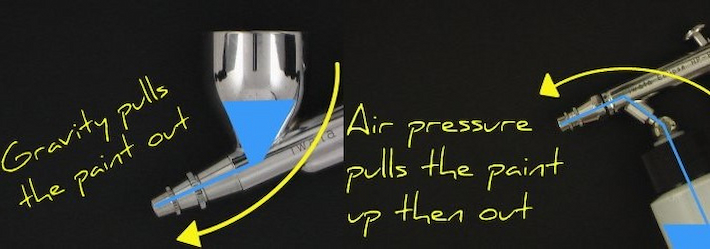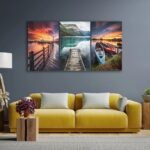Whether you’re a beginner in the world of RC vehicles, or you’ve mastered the scale modelling hobby, painting your models and miniatures is one of the most amusing ways to give your hobby an upgrade.
But when it comes to painting your models, many painters and calligraphy artists are replacing their regular brushes with a convenient airbrush. And it’s not surprising at all, considering that an airbrush opens a variety of painting opportunities and lets you spray the surface with great precision.
However, choosing the right airbrush for your RCs and models can be a daunting task, especially once you get hit by the wide range of types packed with different features. This is why we put together a couple of tips and suggestions that might come in handy when choosing the right option.
Types of Airbrushes
Before you decide to visit your favourite store selling airbrushes Australia wide, it’s essential to get to know the different types and invest in the right one for your needs. Hence, we can split airbrushes into a couple of categories:
Gravity vs. Suction Airbrushes

When it comes to distinguishing airbrushes by their mode of propulsion and how they mix paint with the air, we can make a difference between gravity and suction airbrushes. Gravity airbrushes are featuring a reservoir fixed above the body of the brush, while suction airbrushes are known for their reservoir on the right side of the body for small-volume models or below the body for larger-volume models.
Gravity airbrushes (obviously) use the action of gravity to supply you with paint, they’re compatible with thicker paints and ideal for both, left and right-handed modellers. On the other hand, suction airbrushes propel paint by pressurizing the paint and mixing it with the airflow, come with reservoirs in different sizes and are considered more difficult to learn.
Single Action vs. Dual Action Airbrushes
These categories are distinguishing airbrushes depending on how they’re controlling the paint and the airflow. Single action airbrushes are controlling the air by pressing on a trigger- the further you press, the more air you allow to flow through and the more paint it pulls through. These brushes are very easy to handle and control and therefore very suitable for beginners.
On the other hand, dual-action airbrushes use this trigger to control both, the airflow and the needle position, whereas pressing it down controls the airflow while the needle is adjusted by moving it back and forward. These brushes are considered a more advanced type that can be hard to learn. But once you master them, they’re perfect for producing different effects, opacities and lines.
Internal vs. External Mix Airbrushes
This category refers to where exactly the paint mixes with the air, or where is it atomized. As much as this category is often overlooked, have in mind that it’ll determine the effect on the finish of the paint.
Internal mix airbrushes mix the air when the paint enters the chamber of the airbrush. This type of atomization typically produces a smoother and finer finish, which is preferred by many model builders.
On the other hand, external mix airbrushes work by flowing the paint along the outside of the nozzle without the paint entering the airbrush at all. As soon as the air stream exits the nozzle, it atomizes with the air and create a flatter and not that smooth finish.
What Features to Pay Attention to?

Except for choosing the right type, it’s also essential to choose the right features for your needs and preferences. So, whether you’re about to explore airbrushes online or hit your favourite hobby store, have in mind that you’ll stumble upon a lot of options packed with a variety of different features. Here’s what you should pay attention to:
Compressor
The compressor is one of the most important parts of every airbrush, as they provide compressed air to run the airbrush. Hence, if you’re a beginner, it’s recommended to go for a compressor without a storage tank. These compressors are featuring very simple designs and make for the most affordable option for everyone.
Once you master airbrushing techniques, feel free to go for a compressor with a storage tank. With these compressors, you’ll be able to control the pressure of air your airbrush delivers and paint for a while before the storage gets empty. Hence, it’s recommended to go for a tank featuring a filter to avoid condensation in humid environments, as well as a size that fits your needs- from the smaller 1L tanks to the bulkier 25L ones.
Needles
Needles, commonly referred to as nozzles will help you produce fine lines and decorate your models however you desire. Hence, if you want to try out drawing something more intricate, a set of needles ranging from 0.2 to 0.5mm will be more than great to start with.
However, have in mind that needles for airbrushes are very fragile, and it can always come in handy having a couple of spares to hand in case you twist or damage them in any way. Also, it’s recommended to choose an airbrush with available spare needles so you can replace them more frequently.
Paints
Before you choose any type of airbrush featuring the perfect functionalities for you, make sure you check that it can handle your favoured type of paint. Most of the airbrushes you’ll stumble upon will be suitable for using different types of paints, while some of them will require solvents and other types of thinners to “water down” the paints. Also, have in mind that some airbrushes can get damaged by some types of solvents used for cleaning the brush afterwards, so make sure you choose wisely.
Scale modellers typically use acrylic and enamel paints for airbrushing their models. Acrylic paints are known to deliver the best results, especially on plastic models. These paints also have a very short drying time, they’re very easy to touch up and can be found in every hobby or art supplies store.
On the other hand, enamel, or oil-based paints are perfect if you want to create a very hard finish, as the oil reacts with the air to dry. These hard finishes are known to create ultimately glossy sheens and are shown to be more durable than acrylic paints. However, keep in mind that enamel paints dry slower than acrylic ones and you’ll have to use respiratory protection as they tend to give off toxic fumes.
Now that you found out about the most important features to consider, it’s time to explore airbrushes Australia wide stores and pick the perfect option for your scale models and RC vehicles.



